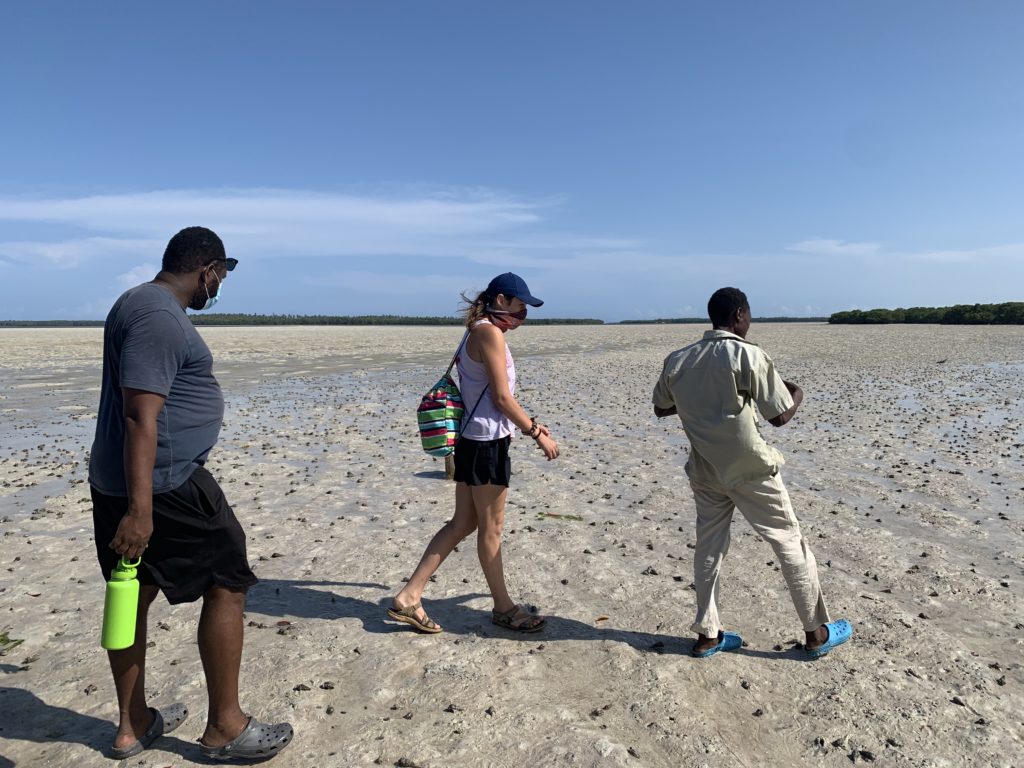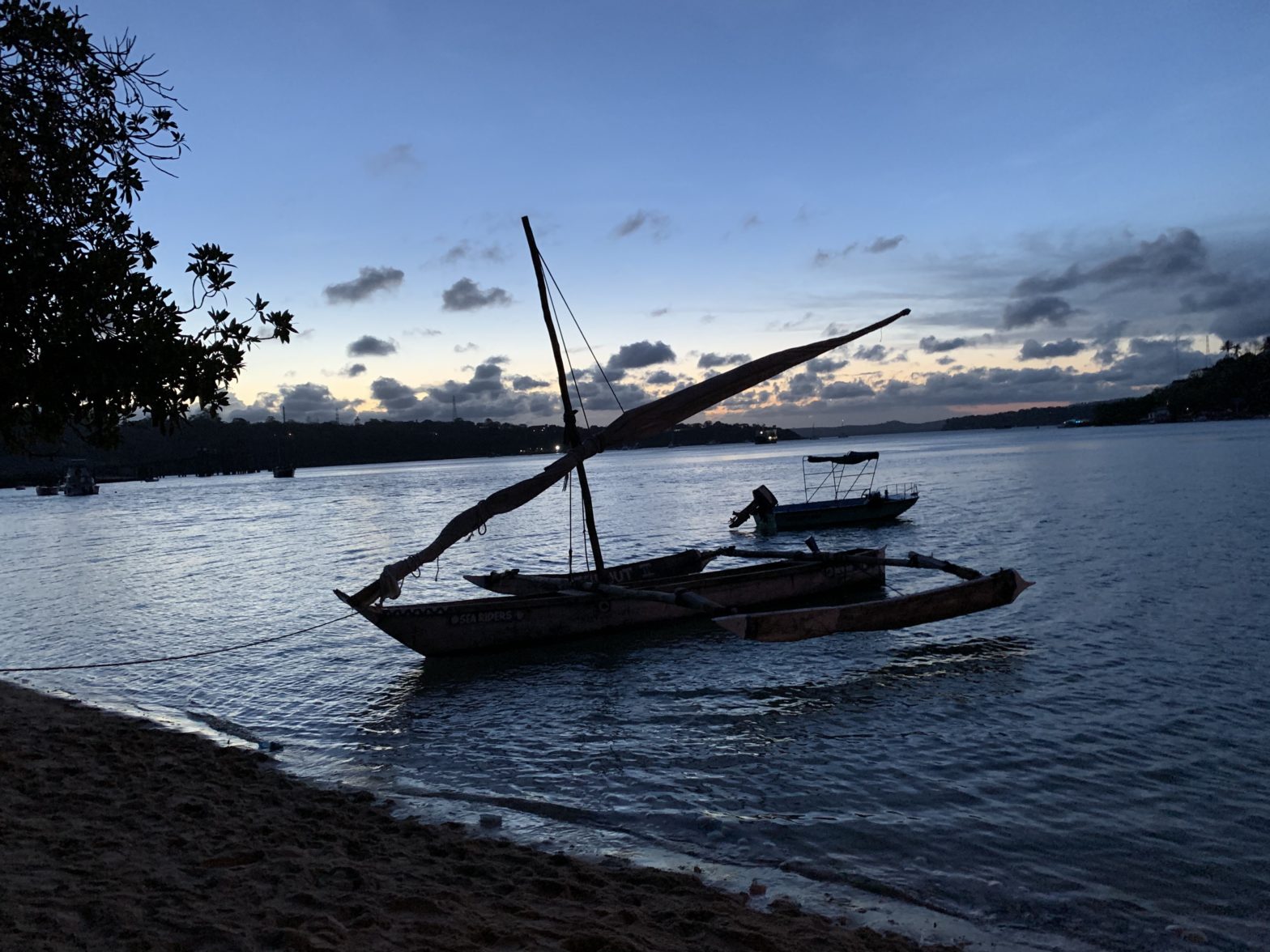
We finally arrived to Kenya on the 13th of March. We got to Kilfi in the evening following an 8 hour drive; we were all tired, sweaty, and ready for bed. The next morning, we got to see just where SIT had elected to set us up for the foreseeable future. So far as quarantine accommodations go, we were not disappointed. We were staying at a place called Makuti Villas, pictured above, and that little island is where I liked to do my work such as working on these blogs. Kilifi Kenya is a mid sized city located an hour North of Mombasa on the Kenyan coast. It is a place that is known for its beaches, but most importantly for us, its coral reefs as well. All the students, including myself, couldn’t wait to finish up quarantine and get outside the walls!
Some COVID drama ended up extending our quarantine an extra couple of weeks but eventually we made it out. Even a place as amazing as Makuti starts to lose its charm after a few weeks cooped inside its walls. The company wasn’t too bad though. It included my cell mate (the guy next door who also had COVID), a local stray cat who we named COVID, and the resident monkey troop. You had to watch out for the monkeys though, they had a tendency to steal your toast when you were not looking…

I managed to get entertainment out of the monkeys despite of their thieving habits by arranging obstacle courses for them on the old playground equipment out front. I would incentivize them with bananas duct taped in various places, which provided much laughter for me and those around me during my sentence. For those concerned about feeding the wildlife, this particular troop of monkeys lived in the heart of the city and was adapted to live almost entirely on human food because of it (for better or worse)
When we finally got out, our professors were anxious to get everyone back on track and this meant lots of excursions. I couldn’t be happier! One of the first places we were taken was to the mangroves at Mida creek. On our tours through the mangroves, we were educated on the different species found within the area as well as all of the types of crabs and other creatures that rely on them. I made sure to pay especially close attention during this portion because I plan to conduct my Independent Study Project on crab species richness and diversity as they pertain to mangrove type. We managed to hit the mangroves at low tide which meant we had extra time to walk around and explore.

Some of the other places we managed to hit included the Mnarani Ruins (circa 1400s), the Arabuko Sokoke forest (where we got to see the endemic Sokoke Scops Owl!), Local Oceans sea turtle rehabilitation center, Arocha Kenya reef and forest research center, as well as numerous other types of reefs and other marine ecosystems, the latter of which will be covered in another blog post. We managed to cover all of this in about a week. Due to the uncertainty of our programs future with COVID, everyone is trying very hard to prepare us for our Independent Study Projects as soon as possible.







Now that I am finally out of quarantine and have gotten a taste for Kilifi life, I cannot wait to see what kind of fun I can find in the next few weeks.
- 99677029440749,22.006459411185016,38.99677029440749 ↩


